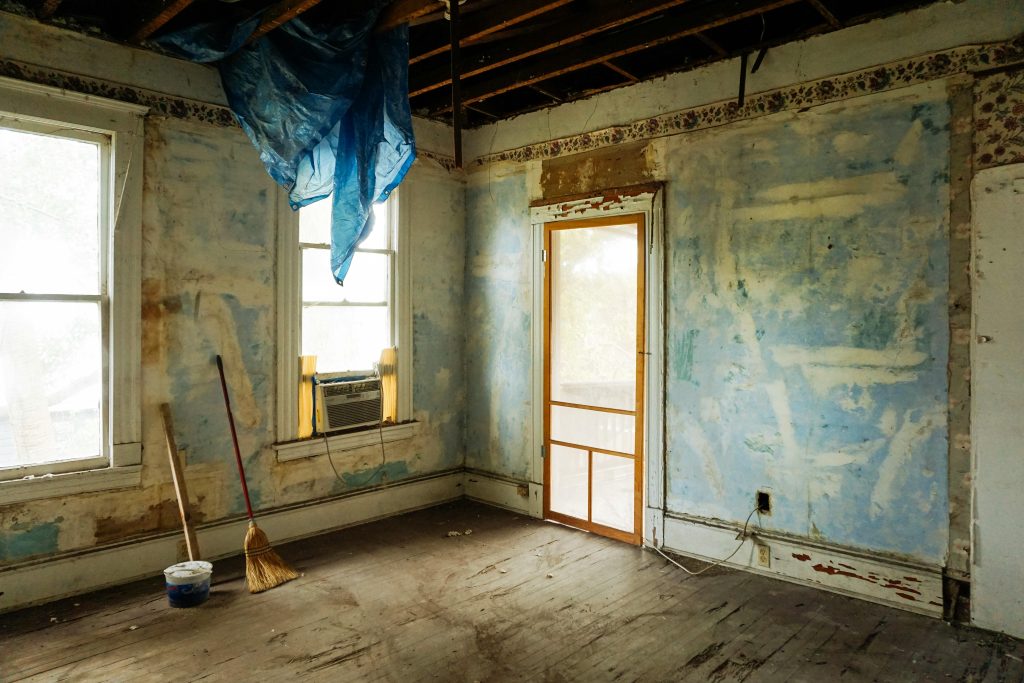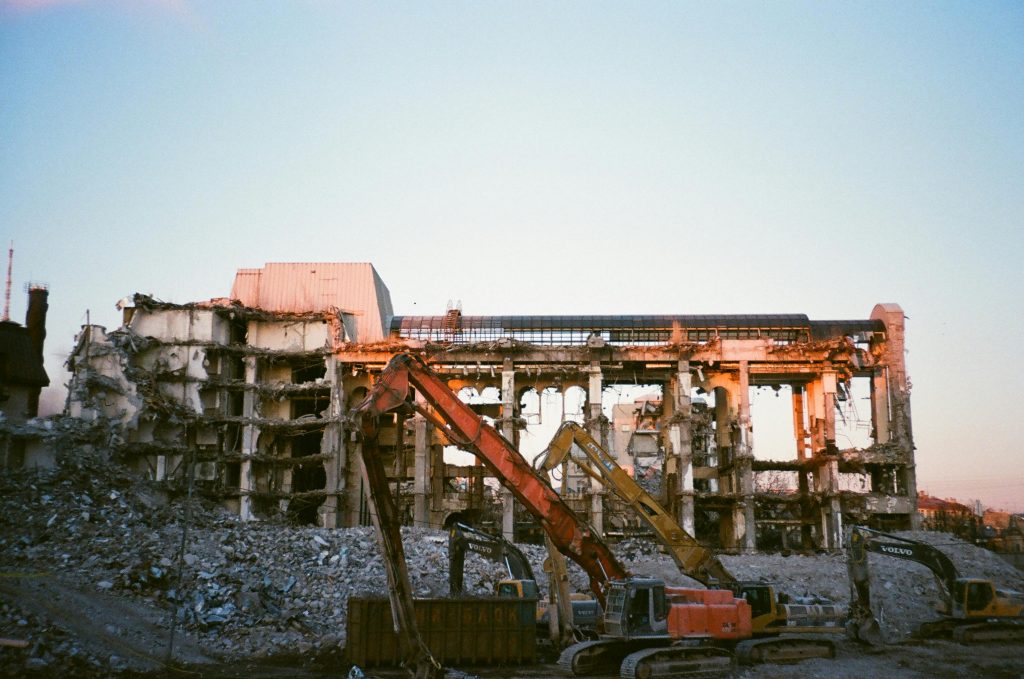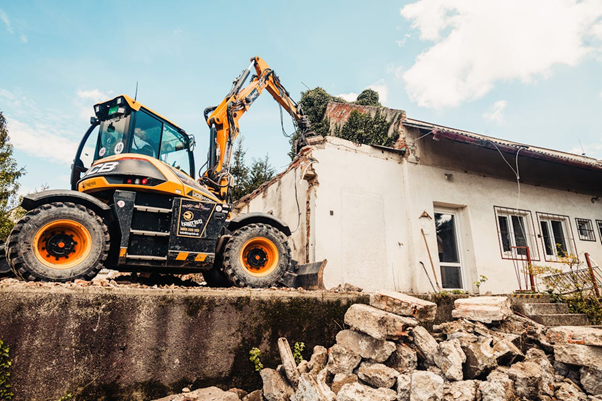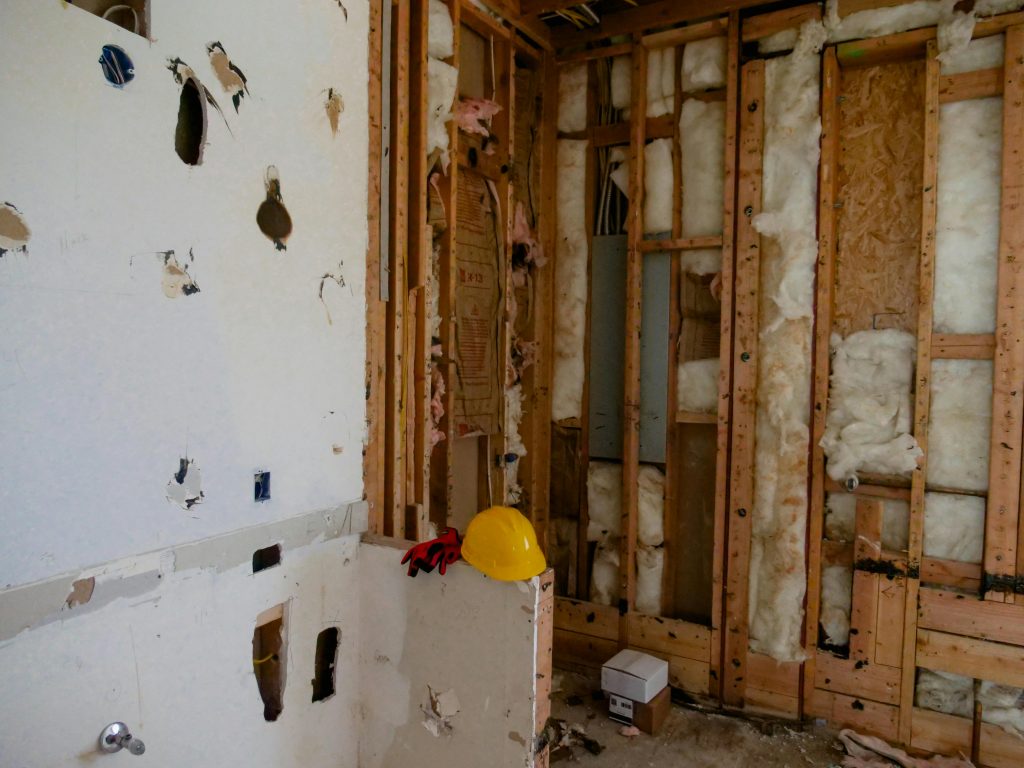When it comes to a building project, choosing the right approach is crucial for the success of your project. In this blog, we’ll be looking at the differences between soft strip demolition and hard demolition, which each have their own distinct process, tools, and benefits. Understanding these differences can help you make an informed decision, whether you’re planning a renovation, clearing a site for new construction, or dealing with a structurally compromised building.
We’ll explore the specific tasks involved, the benefits and challenges of each method, and how to determine which approach is best suited to your needs. By the end, you’ll have a clear understanding of how to approach your next project with confidence.
Whilst you’re here, why not check out our other blog about the benefits of hiring a soft strip demolition contractor? We take you through the reasons why you should consider hiring a professional contractor over carrying out the work yourself.
Without further ado, let’s get into it…
What is Soft Strip Demolition?

We can’t talk about the differences between these two processes without first making sure you know exactly what they are. Soft strip demolition is a less invasive process than full demolition, with the primary goal being the careful removal of non-structural elements. It can be done as part of a refurbishment, where the structure of the building will stay intact, or as a precursor to a full demolition itself.
Soft strip demolition requires more manual labour as opposed to plant and machinery which aren’t precise enough for this careful process. It often requires skilled workers who can carefully dismantle and segregate materials for recycling or reuse without damaging the structure of the building or the materials themselves.
What do soft strip contractors usually remove?
Soft strip contractors remove non-structural elements such as:
- Doors and windows
- Carpets and flooring
- Stud walls
- Light fixtures
- Electrical wiring and plumbing
- Insulation
- Skirting boards
- Tiles
Benefits of soft strip demolition
Sustainability
The process of soft strip demolition is more environmentally friendly than hard demolition, particularly because it relies more on manual labour than heavy machinery. And since the building’s structure is still intact, the energy required for a complete rebuild is eliminated.
As mentioned above, soft strip contractors will focus more on the segregation and recycling of materials such as metals, wood and plastics, reducing the amount of waste sent to landfills. Some of the materials can even be repurposed within the renovation, further improving the eco-friendliness of the project. In this case, not only will you not need to procure new resources, you won’t need to have them transported and delivered, reducing your carbon footprint.
Cost efficiency
As well as improving the sustainability of the project, the reuse of materials removed during the soft strip demolition process improves the project’s cost efficiency. Even if not reused in the project, items like doors, windows, light fixtures, and wiring can be sold, further offsetting some of the costs associated with demolition. By reducing the volume of waste, soft strip contractors can also help avoid or minimise expensive disposal fees associated with sending large amounts of debris to landfills.
Safety
Soft strip demolition comes with a lower risk of sudden structural collapse, which is more likely during hard demolition when load-bearing walls and other critical structures are being dismantled by heavy machinery, which comes with its own risks as well. The entire process is more controlled and methodical, with workers carefully removing materials and thus reducing the likelihood of accidents.
Due to the process’ focus on removing interior elements, soft strip demolition generates less dust and debris, which reduces the risk of hazards like dust inhalation, and the risk of disturbing hazardous materials like asbestos is also lowered.
Stakeholder perception
Clients and communities often view soft strip demolition favourably because it demonstrates a commitment to sustainability and responsible resource management. It’s also preferred as it tends to be a far less intrusive process than hard demolition, which can come with higher levels of noise and dust pollution. With some buildings there may also be an element of public protectiveness – for example, many locals may prefer a beloved, old cinema to be refurbished instead of completely demolished.
What is Hard Demolition?

Hard demolition, in contrast, refers to the complete or partial destruction of a building’s structural elements. This is generally undertaken when a building needs to be completely removed, either to clear the land for new construction or because the building is unsafe or obsolete. Hard demolition is typically more mechanical, involving heavy machinery like excavators, wrecking balls, and bulldozers. Depending on the project, controlled explosives may also be used to bring down large structures.
What materials are usually removed during a hard demolition?
Hard demolition involves breaking down:
- Load-bearing walls
- Structural beams and columns
- Foundations
- Roof structures
Benefits of hard demolition
Time efficiency
Whilst soft strip demolition is a more precise process reliant on manual labour, hard demolition allows for the rapid dismantling of structures using machinery. This speed can be crucial in projects with tight deadlines or when the land needs to be cleared quickly for new construction. Not only can the building be demolished quickly, machinery can also be used to quickly collect and transport the material to clear the area.
Comprehensive demolition
Hard demolition is capable of dismantling any type of structure, regardless of size, height, or material. This includes reinforced concrete buildings, steel structures, and large industrial facilities. When complete removal of existing structures is necessary to make way for new construction, hard demolition is often the best solution. It leaves a clean site, ready for the next phase of development. Hard demolition can even include the removal of foundations and below-ground structures, ensuring that the site is completely cleared and ready for new construction from the ground up.
Safe handling of dangerous buildings
Hard demolition is often the safest approach for dealing with buildings that are structurally unsound, fire-damaged, or contaminated. The use of machinery keeps workers at a safer distance from potentially hazardous situations. In some cases, hard demolition is used in conjunction with specialised procedures to safely demolish structures containing hazardous materials like asbestos or lead.

Key Differences Between Soft Strip Demolition and Hard Demolition
To help you understand the overall differences between soft strip and hard demolition, we’ve put together the following table focusing on a range of categories. Whilst the following differences will be the case for many projects, they’re not always a blanket rule. For example, soft strip demolition could come with a higher price tag than hard demolition if it’s a particularly complex, hazardous or large-scale project. It’s important to consider a wide range of factors before deciding which type of demolition is the best for your project. Many projects will indeed require a mix of both soft strip and hard demolition for the best result.
| Category | Soft Strip Demolition | Hard Demolition |
| Scope | Focuses on non-structural elements within a building | Includes the removal load-bearing walls, beams, and foundations |
| Objectives | Prepares a building for renovation or full demolition | Completely or partially demolishes the structural elements of a building |
| Tools | Manual labour and hand tools | Heavy machinery and sometimes controlled explosives |
| Approach | Careful, precise and controlled to preserve the structural integrity of the building | Large-scale operation to dismantle the entire structure quickly and efficiently |
| Waste | Emphasises recycling and recovery of materials as well as reuse of fixtures | Generates large amounts of debris though modern practices involve more recycling |
| Energy | Less energy-intensive due to reliance on manual labour | More energy-intensive due to use of heavy machinery |
| Safety | Involves fewer safety risks due to focus on non-structural elements, though hazardous materials like asbestos must be carefully handled | Generally involves higher risks due to scale of demolition and use of heavy machinery. Requires strict safety measures and planning |
| Disruption | Generally less disruptive, making it more suitable for residential or urban areas | Produces more noise and dust pollution which can impact surrounding areas |
| Cost | Usually less expensive due to the smaller scale of the project, but can vary with project complexity and length | Associated with higher costs due to the price of heavy machinery and waste disposal |

Soft Strip Demolition with The Hotel Clearance Company
If you’re looking for a reliable, experienced company to help with your soft strip demolition needs, look no further than The Hotel Clearance Company. We offer tailored solutions that meet the specific needs of our clients, with a team committed to providing exceptional service levels, efficient project management, and eco-friendly disposal solutions.
Our asset valuation services mean we can help you offset the cost of your clearance project by identifying valuable items that can be sold through private treaty sales or auctions.
If you’re interested in learning more about our services, please don’t hesitate to get in touch. You can reach us by phone at 020 8123 8241 or by our online contact form. We look forward to hearing from you soon!
